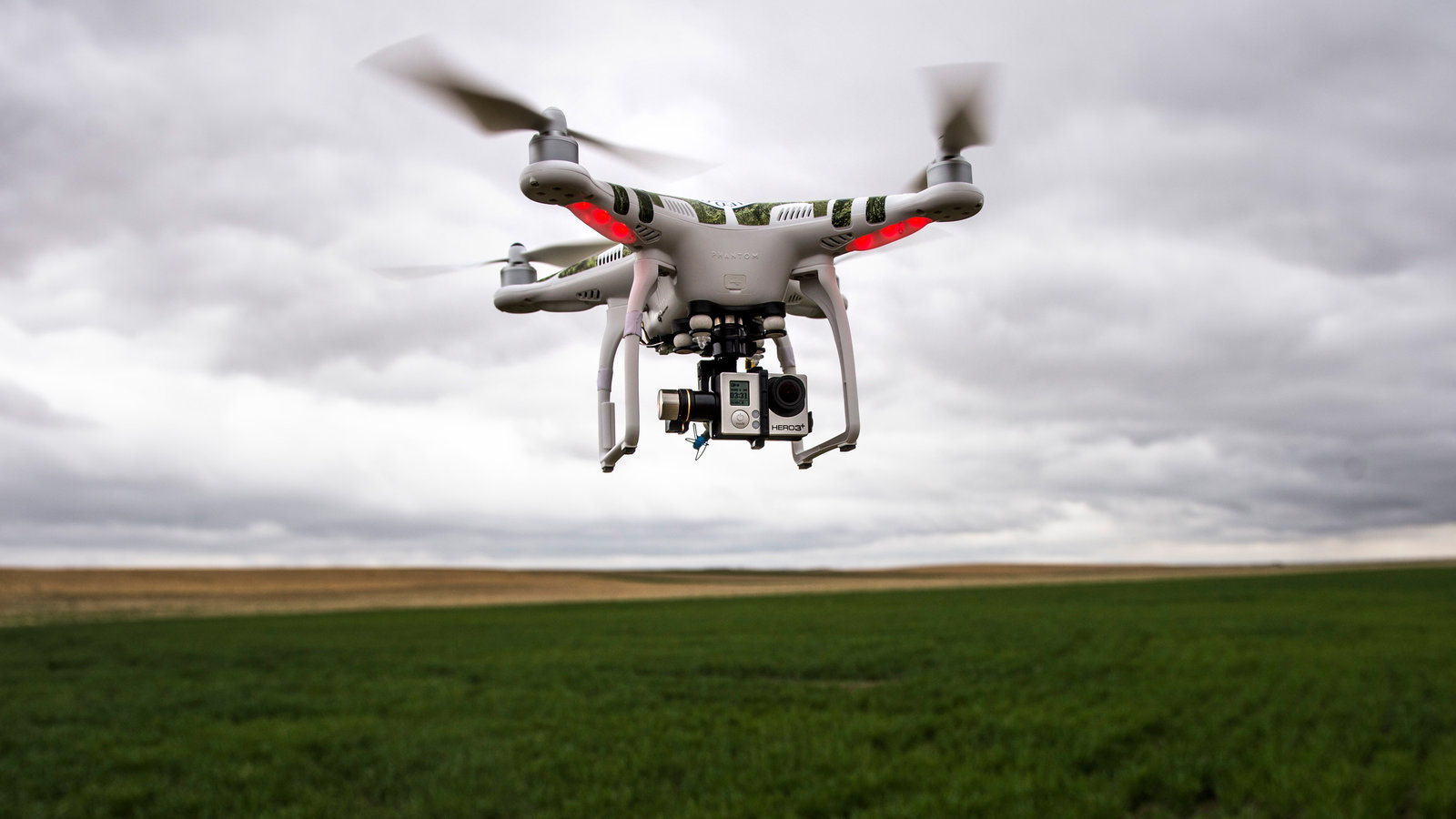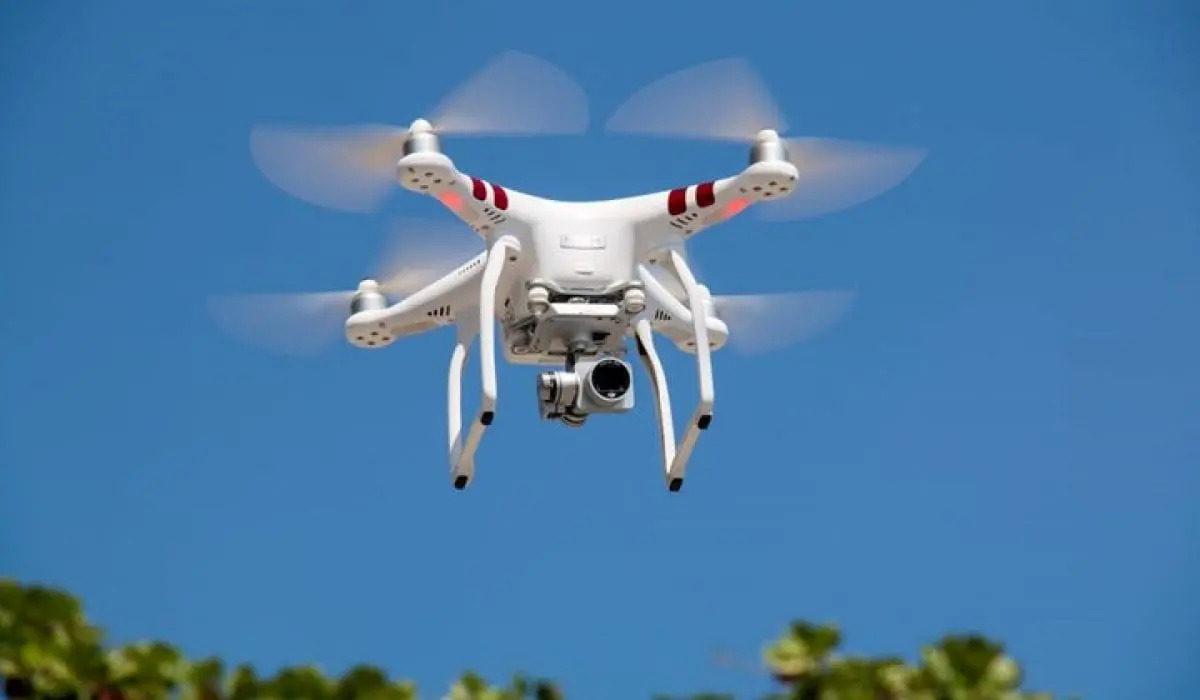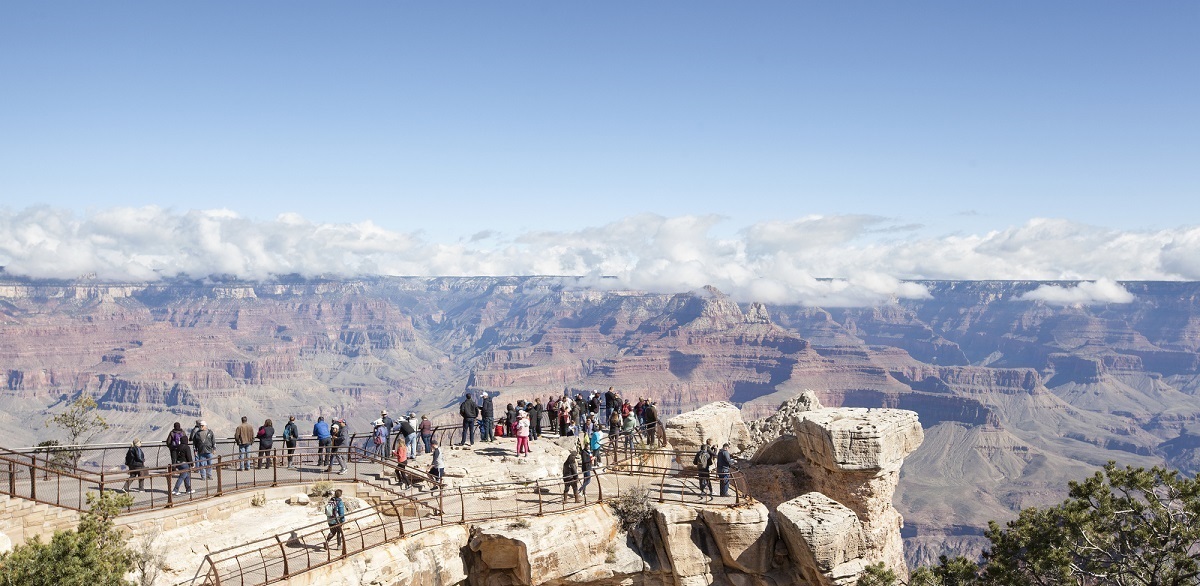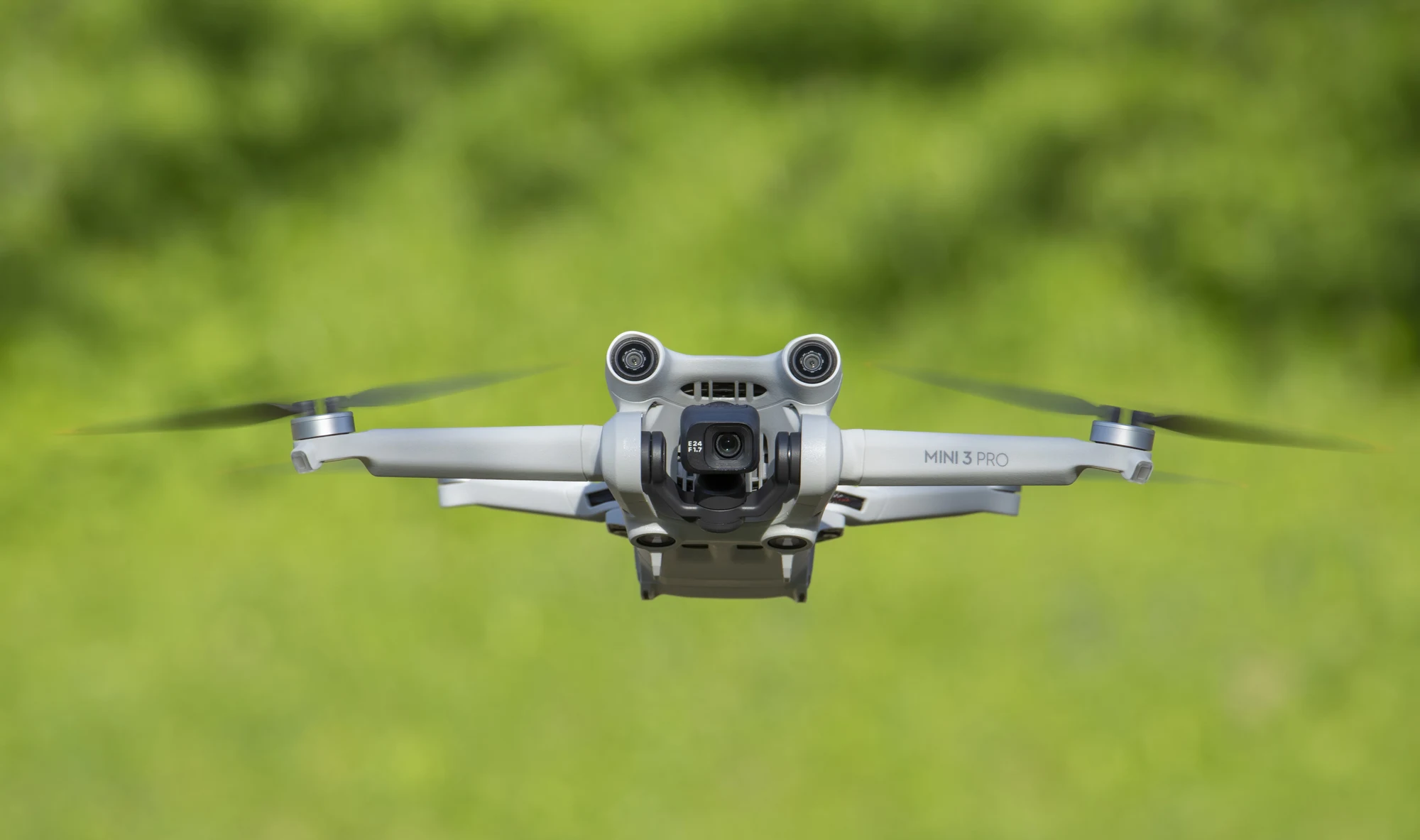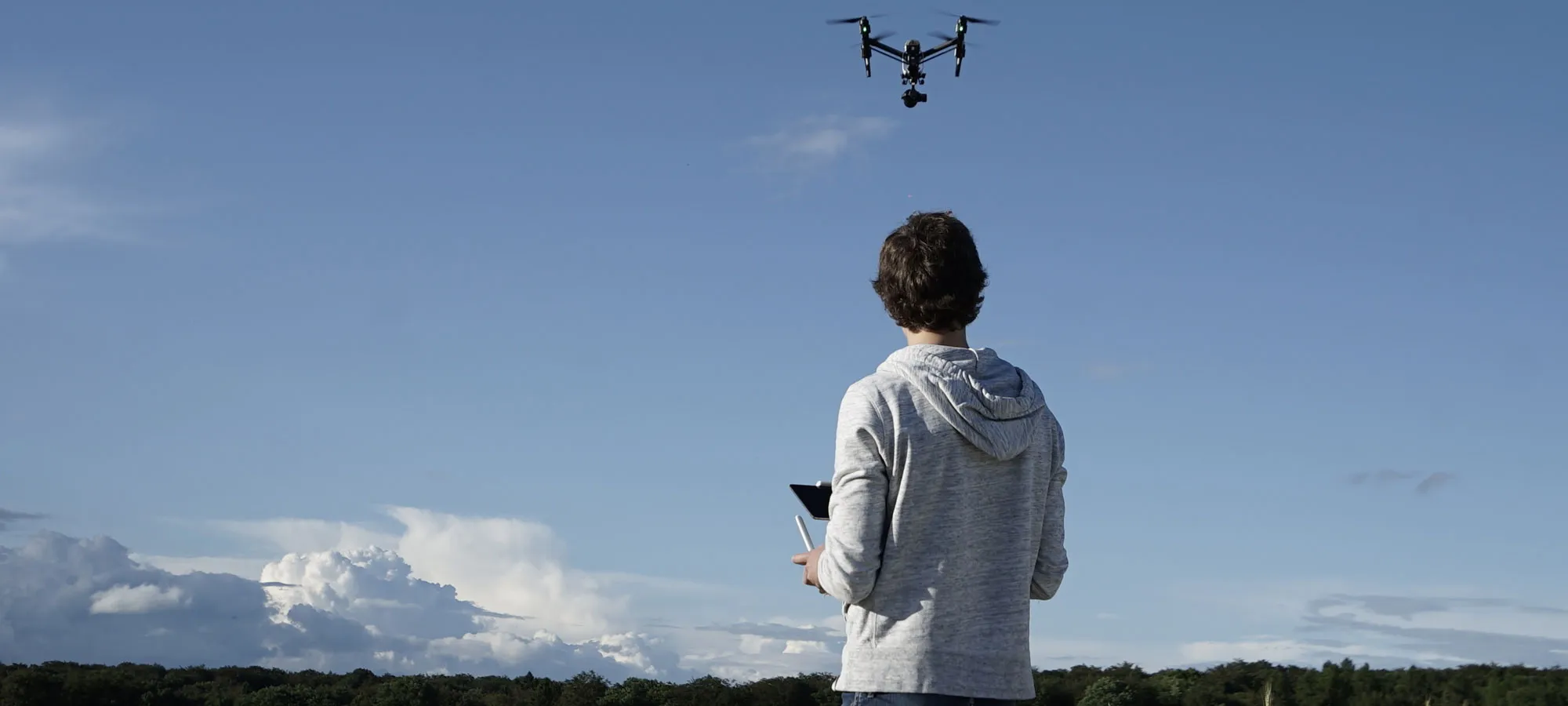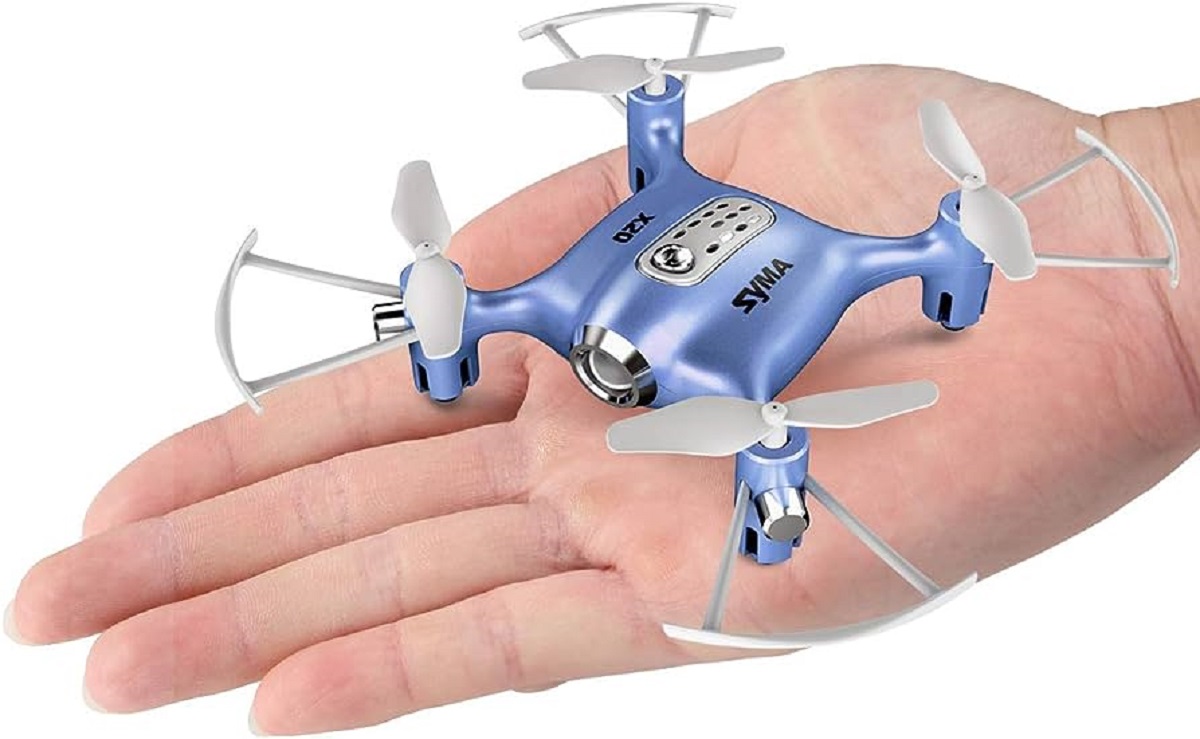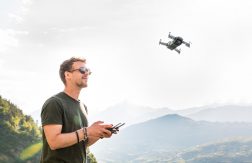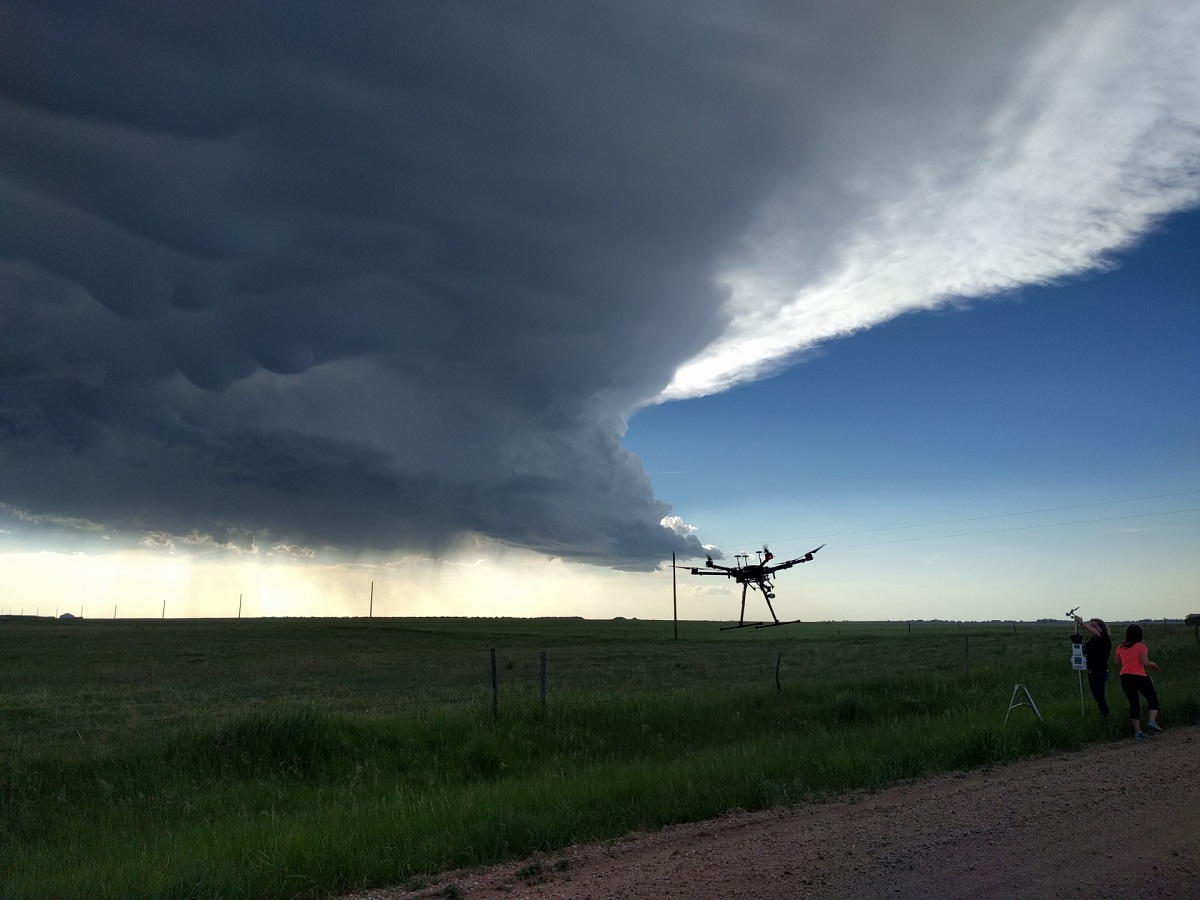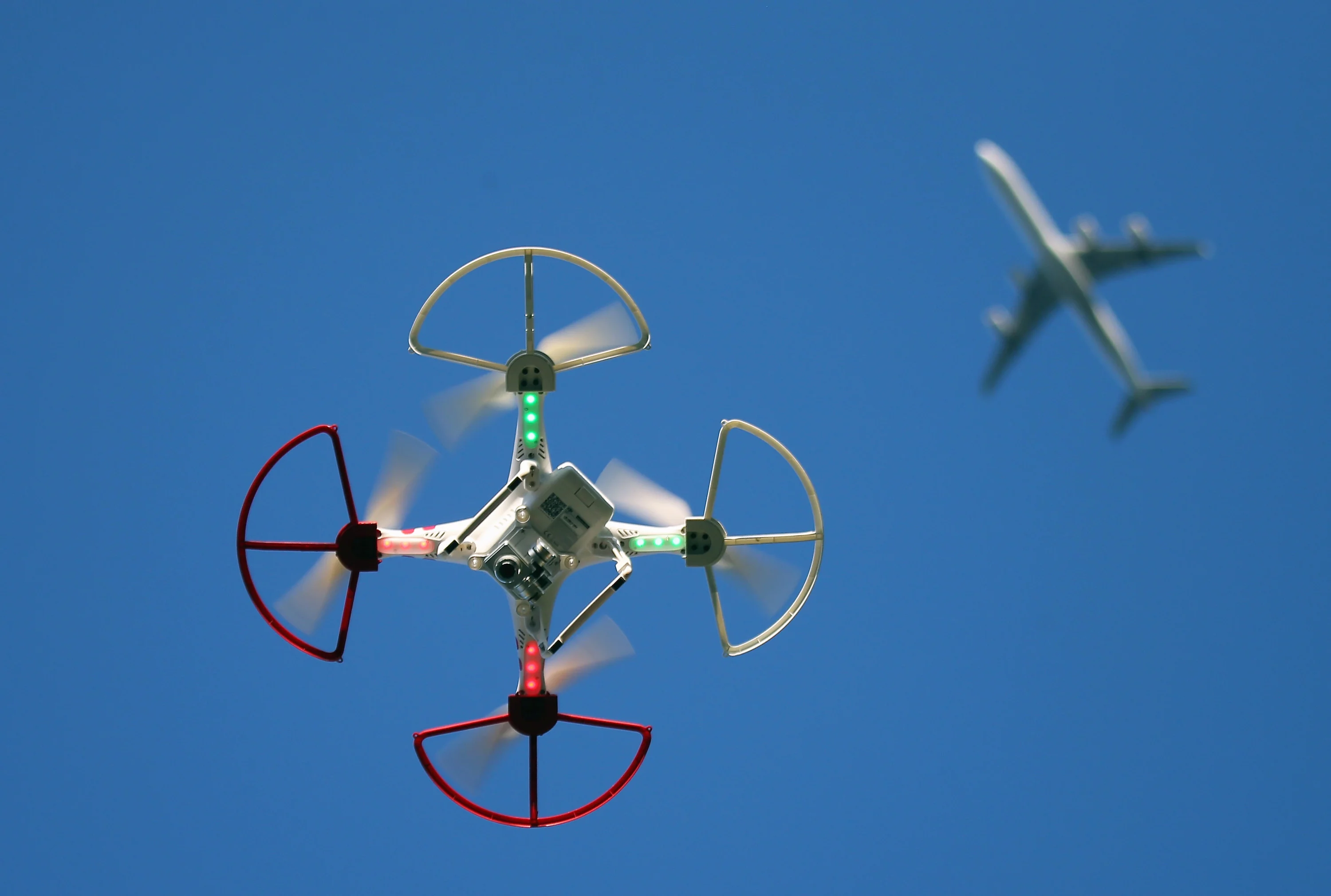Introduction
Colorado is known for its breathtaking landscapes, rugged mountains, and vibrant outdoor recreational activities. It’s no wonder that drone enthusiasts are eager to explore the state from a different perspective. If you’re wondering where you can fly a drone in Colorado, you’ve come to the right place.
With its diverse range of natural and man-made attractions, Colorado offers plenty of opportunities for drone flights. From state parks and national forests to city parks and wilderness areas, there are numerous places where you can unleash your creativity and capture stunning aerial footage.
However, before you embark on your drone adventure, it’s important to be aware of the regulations and guidelines set forth by different authorities. This will ensure that you fly your drone responsibly and with utmost respect for the environment and the privacy of others.
In this guide, we will explore the various locations in Colorado where you can fly a drone. We will also discuss the local drone regulations and provide you with some helpful tips to make the most out of your aerial photography or videography experience.
Whether you’re a recreational drone pilot or a professional aerial photographer, Colorado offers a wealth of amazing locations to capture stunning aerial shots. So, without further ado, let’s dive into the different types of areas where you can fly a drone in this beautiful state!
State Parks
Colorado is home to an impressive network of state parks, each showcasing the state’s natural beauty and providing ample opportunities for drone enthusiasts. These parks offer a range of landscapes, including lakes, rivers, canyons, and forests.
One of the popular state parks for drone flying is Chatfield State Park, located near Littleton. With its expansive reservoir and picturesque views of the Front Range mountains, this park provides a stunning backdrop for aerial photography or videography. Just be sure to follow the designated flight areas and obtain any required permits.
Another notable state park is Roxborough State Park. Situated in the foothills southwest of Denver, this park is famous for its red rock formations and unique geological features. Flying a drone here allows you to capture the dramatic rock formations from a whole new perspective.
If you’re in the southwestern part of the state, make sure to visit Ridgway State Park. Surrounded by the San Juan Mountains, this park offers breathtaking views of the rugged landscape and the sparkling waters of Ridgway Reservoir. It’s a perfect spot for capturing aerial shots of the mountains and the reflection of the scenery in the water.
When flying your drone in state parks, it’s crucial to check the specific regulations for each park. Some parks may have restrictions on where drones can be flown or require permits for commercial drone operations. Additionally, always be mindful of other visitors and wildlife in the area, ensuring that your drone flights do not disturb or endanger them.
Remember to respect the park’s rules and regulations and fly your drone responsibly, so that future visitors can continue to enjoy the beauty of Colorado’s state parks.
National Parks
Colorado is blessed with four national parks that showcase the state’s incredible natural wonders. These national parks provide not only a haven for outdoor enthusiasts but also an opportunity for drone pilots to capture awe-inspiring footage from the air.
Rocky Mountain National Park is a must-visit for any drone enthusiast. With its towering peaks, alpine lakes, and abundant wildlife, this park offers endless possibilities for aerial photography and videography. However, it’s important to note that drone flights are only allowed in designated areas and require a permit from the park authorities.
Great Sand Dunes National Park, located in southern Colorado, is another unique and captivating destination for drone flying. The towering sand dunes against the backdrop of the Sangre de Cristo Mountains create a stunning contrast and offer a once-in-a-lifetime aerial perspective. Drones are permitted in this park, but make sure to follow the regulations and respect the sensitive ecosystem.
Mesa Verde National Park, known for its well-preserved Ancestral Puebloan cliff dwellings, provides a different kind of aerial opportunity. Capture the intricate architecture and rugged landscapes of this UNESCO World Heritage Site from above to truly appreciate the scale and beauty of the ancient structures.
Black Canyon of the Gunnison National Park is a hidden gem in Colorado, known for its steep cliffs and dramatic landscapes carved by the Gunnison River. Flying a drone here allows you to capture the sheer vertical drops and deep canyons in a way that showcases their grandeur and beauty.
It’s crucial to familiarize yourself with the specific drone regulations in each national park. Some may have restrictions on where and when drones can be flown, while others may require permits or have guidelines for commercial drone operations. Always prioritize the safety of fellow visitors and the preservation of these pristine areas when flying your drone in national parks.
Explore the breathtaking vistas, diverse ecosystems, and rich cultural heritage of Colorado’s national parks through the lens of a drone, and create stunning aerial footage that captures the essence of these remarkable destinations.
National Forests
Colorado is home to extensive national forest lands that offer drone enthusiasts a plethora of opportunities to explore the state’s natural beauty from above. These vast forests provide a diverse range of landscapes, from lush valleys and towering mountains to picturesque rivers and alpine meadows.
One of the most popular national forests for drone flying is the White River National Forest. Covering more than 2.3 million acres, this forest is located in the heart of the Rockies and offers breathtaking views of snow-capped mountains, crystal-clear lakes, and dense forests. With so much open space, there are plenty of places where you can fly your drone and capture stunning footage.
Pike National Forest is another scenic destination for flying drones. Situated near Colorado Springs, this forest features a variety of ecosystems, including towering granite formations, alpine tundra, and lush woodlands. Find a secluded spot and take your drone to the skies to capture the natural beauty of Pike National Forest from above.
San Juan National Forest, located in the southwestern part of the state, is renowned for its rugged mountains, deep canyons, and pristine wilderness areas. Fly your drone here to capture panoramic views of majestic peaks, winding rivers, and ancient forests.
When flying your drone in national forests, it’s important to be aware of any restrictions or guidelines set by the forest authorities. While drone flights are generally permitted in national forests, there may be specific areas or times when flying is prohibited. Understand and respect these regulations to ensure the safety of other visitors and the preservation of the natural environment.
With the vast expanse of national forests in Colorado, drone pilots have the opportunity to capture stunning aerial footage that showcases the state’s diverse landscapes and natural wonders. Immerse yourself in the beauty of these forests and let your drone soar through the trees to capture the magic from above.
City and County Parks
In addition to the state and national parks, Colorado is dotted with numerous city and county parks that offer incredible settings for flying drones. These parks can be found in urban areas, suburban neighborhoods, and even rural communities, providing convenient access for drone enthusiasts.
Garden of the Gods Park in Colorado Springs is a prime location for drone flying. This iconic park features towering sandstone rock formations set against the backdrop of Pikes Peak. Capture aerial shots of the unique geological structures and witness the stunning interplay of light and shadows as you maneuver your drone through the park.
Washington Park, located in the heart of Denver, is a popular destination for outdoor activities. With its tree-lined paths, two lakes, and beautiful gardens, this urban oasis offers endless possibilities for capturing aerial footage. Whether it’s a colorful sunset over the lake or people enjoying recreational activities, your drone can help you capture the vibrancy of this park.
Boulder Creek Path in Boulder is a scenic pathway that runs alongside Boulder Creek. With its lush vegetation, charming bridges, and panoramic views of the Rocky Mountains, this park provides an excellent backdrop for aerial photography or videography. Explore the various sections of the path and discover hidden gems to capture with your drone.
Each city and county park in Colorado may have its own rules and regulations regarding drone flights. It’s important to check with the local authorities or park management to understand any specific restrictions or requirements. Respect the privacy of other park visitors and ensure that your drone flights do not disturb the tranquility of these public spaces.
Whether you’re exploring a bustling city park or a serene neighborhood park, flying your drone allows you to view familiar surroundings from a fresh perspective. Unleash your creativity and uncover new angles and compositions as you capture the beauty of Colorado’s city and county parks from above.
Wildlife Refuges
Colorado is home to several wildlife refuges that provide critical habitats for a diverse range of plant and animal species. These refuges not only serve as protected areas for wildlife conservation but also offer drone pilots a unique opportunity to capture incredible footage of wildlife in their natural environment.
One of the prominent wildlife refuges in Colorado is the Rocky Flats National Wildlife Refuge. Situated near Denver, this refuge spans over 5,000 acres and is home to a variety of birds, mammals, and reptiles. Fly your drone over the meadows and wetlands to capture stunning aerial shots of wildlife in their natural habitats.
The Monte Vista National Wildlife Refuge, located in southern Colorado, is known for the annual migration of sandhill cranes. Witness this natural phenomenon from a bird’s-eye view as you fly your drone above the refuge’s marshes and grasslands. Remember to maintain a safe distance and not disturb the wildlife during your flights.
Two Ponds National Wildlife Refuge in Arvada is a small but significant refuge that provides habitat for various bird species, including migratory birds. Use your drone to capture the beauty of the wetlands and the array of bird species that call this refuge home. Always adhere to the refuge’s guidelines to ensure the safety of the wildlife and preserve their natural behavior.
Prior to flying your drone in wildlife refuges, consult the specific regulations outlined by the refuge authorities. It’s important to respect the sensitivity of the ecosystems and the well-being of the animals. Be mindful of any restricted areas and maintain a safe distance from wildlife to prevent disturbance.
By documenting the wildlife and their habitats with your drone, you can raise awareness about the importance of wildlife conservation and capture stunning footage that showcases the incredible biodiversity of Colorado’s wildlife refuges.
Wilderness Areas and Special Management Areas
Colorado is home to numerous wilderness areas and special management areas, offering drone pilots the chance to explore pristine and protected landscapes. These areas are recognized for their natural beauty, ecological importance, and remote wilderness experiences.
The Maroon Bells-Snowmass Wilderness, situated near Aspen, is one of the most popular wilderness areas in Colorado. With its towering peaks, alpine lakes, and meandering trails, this wilderness provides breathtaking vistas that are perfect for capturing aerial footage. However, it’s important to note that drones are not allowed in wilderness areas to protect the solitude and pristine nature of these environments, so be sure to respect the regulations and enjoy the scenery from the ground.
The South San Juan Wilderness, located in the southern part of the state, is another gem for wilderness enthusiasts. This rugged and remote area boasts stunning mountain vistas, deep canyons, and pristine forests. Although drones are not permitted in wilderness areas, you can still capture the beauty of this region by hiking to scenic viewpoints and capturing photos or videos with a traditional camera.
Great Sand Dunes Wilderness, nestled within Great Sand Dunes National Park, is a unique landscape of towering sand dunes that seem to defy gravity. While drones are not allowed in this wilderness area, you can still hike to the top of the dunes and capture the mesmerizing patterns and vastness of the sand dunes with a regular camera.
When visiting wilderness areas and special management areas, it’s important to remember that these areas are designated for protection and preservation. Respect the rules and regulations that are in place to safeguard the natural integrity of these landscapes, even if it means leaving your drone behind.
While you may not be able to fly your drone in wilderness areas, these regions offer countless opportunities for breathtaking photography and unforgettable hiking experiences. Immerse yourself in the serenity of these untouched wilderness areas and capture the essence of Colorado’s natural beauty through your lens.
Local Drone Regulations
When flying a drone in Colorado, it is crucial to familiarize yourself with the local regulations that govern drone operations. The Federal Aviation Administration (FAA) has established certain guidelines for drone pilots to ensure safe and responsible flying. However, local authorities and jurisdictions may have additional rules and restrictions that need to be followed.
Many cities and counties in Colorado have implemented their own drone regulations to address concerns such as privacy, safety, and noise. For example, several cities have established no-fly zones near airports, stadiums, and populated areas. It is important to check with the specific city or county authorities to understand the restrictions in place before flying your drone in these areas.
Furthermore, Colorado has established specific rules for drone operations within state parks. These regulations typically require drone pilots to obtain a permit, fly in designated areas, and adhere to a maximum altitude limit. Each state park may have its own set of rules, so it is important to review and comply with them to avoid any penalties or restrictions.
In addition, it is important to be aware of any restrictions or guidelines put forth by the land management agencies in charge of national parks, national forests, wildlife refuges, and other protected areas. Some areas may have strict limitations on drone flights in order to preserve the natural environment and minimize disturbances to wildlife and other visitors.
Regardless of the specific local regulations, there are some general rules that all drone pilots should follow. These include flying below 400 feet, maintaining visual line of sight with the drone, avoiding flying over people, and respecting the privacy of others. It’s also important to exercise caution when flying near wildlife, as drones can disturb and harm animals.
By familiarizing yourself with the local drone regulations and operating responsibly, you can enjoy the thrilling experience of aerial photography while ensuring the safety of others and the preservation of Colorado’s landscapes.
Tips for Flying a Drone in Colorado
Flying a drone in Colorado’s diverse landscapes can be an incredible experience. To make the most out of your drone flying adventures in the state, consider these helpful tips:
- Research Local Regulations: Before flying your drone, familiarize yourself with the specific rules and regulations set by local authorities, national parks, state parks, and other protected areas. Understanding these guidelines will ensure you fly within the permitted boundaries and maintain compliance.
- Check for No-Fly Zones: Be aware of any designated no-fly zones, including airports, stadiums, and other restricted areas. Utilize apps or online resources that provide up-to-date information about airspace restrictions to avoid flying in prohibited areas.
- Be Mindful of Wildlife: Colorado is known for its abundant wildlife. When flying your drone, avoid disturbing wildlife by maintaining a safe distance. Respect their natural behavior and refrain from flying too close.
- Fly Responsibly: Always prioritize safety. Maintain a direct line of sight with your drone and fly at a reasonable altitude. Avoid flying in inclement weather or strong winds that could compromise the stability and control of your drone.
- Respect the Privacy of Others: Be considerate of people’s privacy when flying your drone. Avoid capturing images or videos of individuals without their consent, especially in private areas.
- Plan Your Flight: Before taking off, plan your flight route and identify any potential hazards or obstacles in the area. This will help you avoid collisions and ensure a smooth flying experience.
- Be Conscious of Battery Life: Colorado’s vast landscapes can be deceiving, and distances may appear shorter than they actually are. Monitor your drone’s battery life and plan your flights accordingly, ensuring you have enough power to safely return and land your drone.
- Capture Unique Perspectives: Take advantage of Colorado’s stunning landscapes to capture unique aerial perspectives. Experiment with different angles, altitudes, and camera settings to create captivating footage that showcases the breathtaking beauty of the state.
- Practice Safe Landings: When landing your drone, choose a flat, open area away from obstacles. Ensure there are no risks of landing near people, vehicles, or fragile environments.
- Respect Park and Wilderness Regulations: In areas where drones are prohibited, such as wilderness areas, respect the regulations and appreciate the natural beauty from the ground. Enjoy the serene atmosphere and unique features these protected areas have to offer.
Remember, responsible drone flying preserves the safety of others, respects privacy, and protects the fragile ecosystems and wildlife of Colorado. By adhering to these tips, you can have an enjoyable and fulfilling drone flying experience in the state’s remarkable landscapes.
Conclusion
Colorado offers a multitude of exciting opportunities for drone enthusiasts to capture stunning aerial footage and explore its breathtaking landscapes. From the towering peaks of the Rocky Mountains to the serene beauty of state parks and the rich biodiversity of wildlife refuges, there is no shortage of incredible sights to discover and document from above.
However, with the privilege of flying a drone comes great responsibility. It is important to familiarize yourself with the local regulations, respect the privacy of others, and prioritize the safety of both people and wildlife. By adhering to these guidelines, you can ensure that your drone flights in Colorado are carried out in a responsible and respectful manner.
Whether you find yourself soaring above the canyons in a national park, capturing the serenity of a state park, or witnessing the migration of birds in a wildlife refuge, always exercise caution and fly within the designated areas. Make the most out of your drone’s capabilities by capturing unique perspectives that showcase the vast and diverse beauty of Colorado.
Remember, Colorado’s natural wonders are not only a source of inspiration but also a delicate ecosystem that needs our protection. As you embark on your drone adventures, let the breathtaking views fuel your passion for conservation and inspire others to appreciate and respect the natural world.
So, pack your drone, research the local regulations, and embark on an unforgettable journey through the skies of Colorado. Capture the essence of this remarkable state and share your aerial masterpieces with the world, all while being a responsible and conscientious drone pilot. Happy flying!







